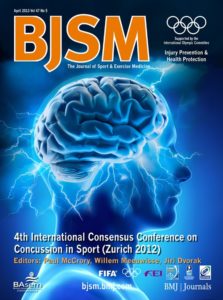How can the SCAT2 be improved? It was agreed that a variety of measures should be employed as part of the assessment of concussion to provide a more complete clinical profile for the concussed athlete. Important clinical information can be ascertained in a streamlined manner through the use of a multimodal instrument such as the Sport Concussion Assessment Tool (SCAT). A baseline assessment is advised wherever possible. However, it is acknowledged that further validity studies need to be performed to answer this specific issue. A future SCAT test battery (ie, SCAT3) should include an initial assessment of injury severity using the Glasgow Coma Scale (GCS), immediately followed by observing and documenting concussion signs. Once this is complete, symptom endorsement and symptom severity, as well as neurocognitive and balance functions, should be assessed in any athlete suspected of sustaining a concussion. It is recommended that these latter steps be conducted following a minimum 15 minute rest period on the sideline to avoid the influence of exertion or fatigue on the athlete’s performance. Although it is noted that this time frame is an arbitrary one, the expert panel agreed nevertheless that a period of rest was important prior to assessment. Future research should consider the efficacy for inclusion of vision tests such as the King-Devick Test and clinical reaction time tests. Recent studies suggest that these may be useful additions to the sideline assessment of concussion.
Summary Points:
- The King-Devick Test has been shown to be a valid, reliable concussion screening test in multiple studies and may be incorporated into sideline concussion protocol.

